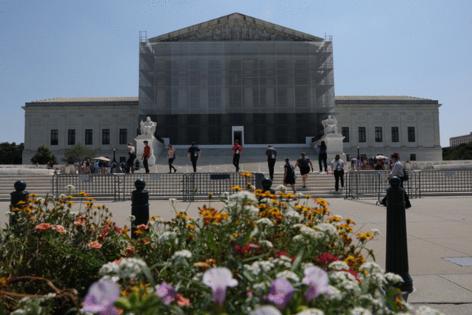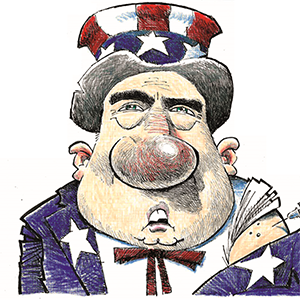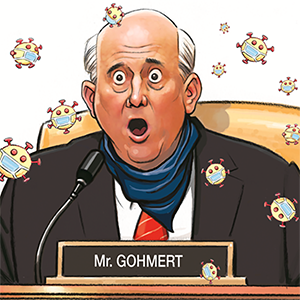Editorial: SCOTUS -- Trump likely to 'succeed' in restructuring case
Published in Political News
The U.S. Supreme Court on Tuesday allowed President Donald Trump to move forward with shrinking the federal workforce. The move is notable as much for the outcome as for the dynamics involved.
The case stemmed from an executive order the president issued early in February directing administration officials to formulate plans for “large-scale” personnel reductions. Several left-wing groups sued, and they found an agreeable federal judge in Northern California, who in May put the edict on permanent hold until the legal case could wind its way through the courts.
District Court Judge Susan Illston acknowledged “the prerogative of presidents to pursue new policy priorities and to imprint their stamp on the federal government.” But she held that, in “large-scale overhauls of federal agencies, any president must enlist the help of his co-equal branch and partner, the Congress.”
The White House appealed, arguing that Trump, as head of the executive branch, acted well within his authority. The Supreme Court agreed, for now. The justices didn’t rule whether the layoffs were wise, nor did they preclude future challenges to the firings. But in an unsigned order, they lifted the stay, holding that the administration was likely to “succeed on its argument” and could implement its restructuring plan even if the justices later determine that parts of it were improperly executed.
Progressives fighting the Trump order were aghast, writing that “there will be no way to unscramble that egg. If the courts ultimately deem the president to have overstepped his authority and intruded upon that of Congress, as a practical matter there will be no way to go back in time to restore those agencies, functions and services.”
In fact, the opposite is true. If courts later determine Trump “overstepped his authority,” jobs and programs can — and probably will — be restored. But if the lower court’s injunction were allowed to stand, and the courts eventually sided with the administration, American taxpayers would be out millions in potential savings that could have been accrued as the issue was litigated.
The high court decision was apparently 8-1, representing a bipartisan consensus. Only liberal Justice Ketanji Brown Jackson dissented, decrying the ruling’s “enormous real-world consequences.” She misses the point. The sole legal issue is whether the president enjoys the power to take such action. It took another liberal justice, Sonia Sotomayor, to point out to her colleague that “the relevant executive order directs agencies to plan reorganizations and reductions in force ‘consistent with applicable law.’ ”
If the White House steps out of line while executing its makeover of the federal workforce, the courts may course correct. In the meantime, Trump is free to fulfill one of his primary campaign promises.
_____
©2025 Las Vegas Review-Journal. Visit reviewjournal.com.. Distributed by Tribune Content Agency, LLC.

























































Comments